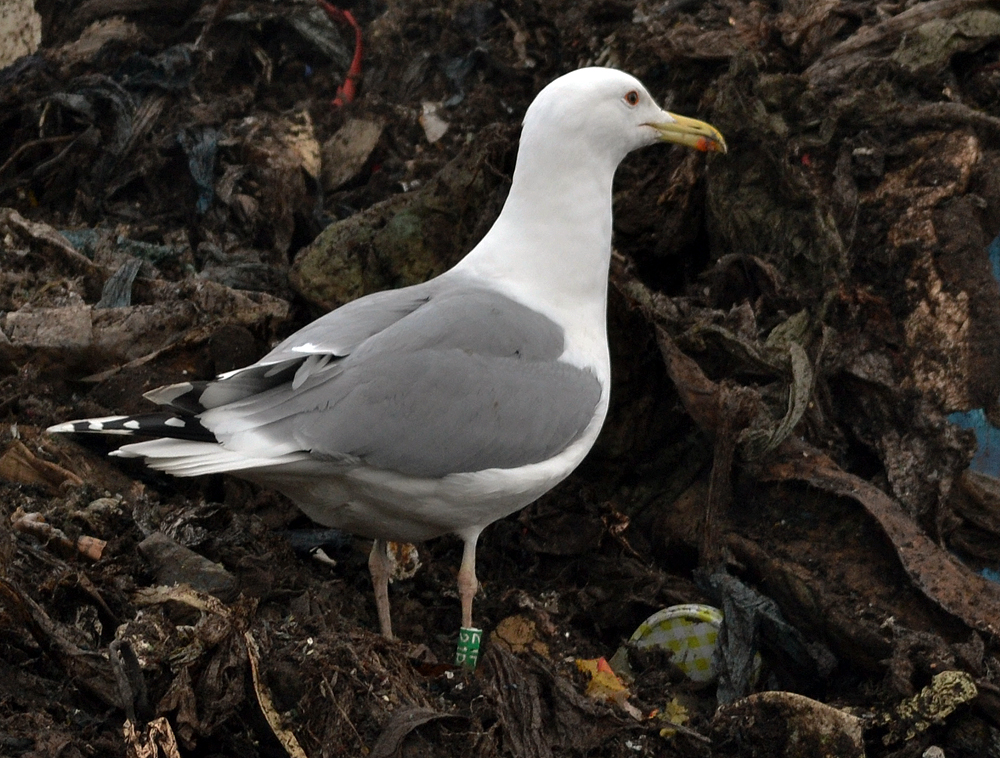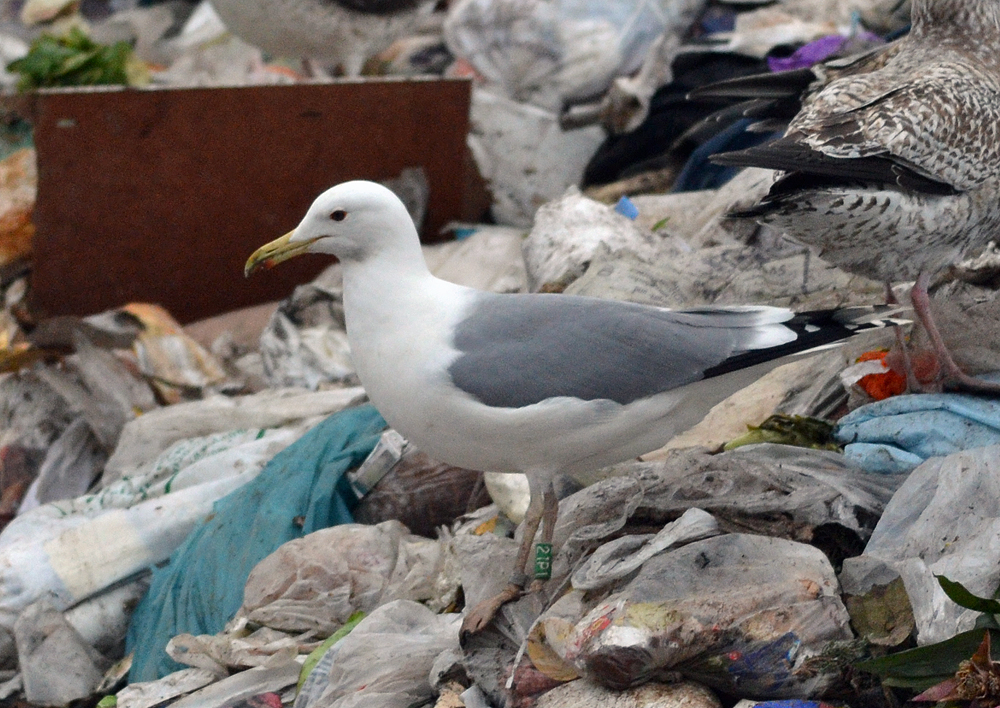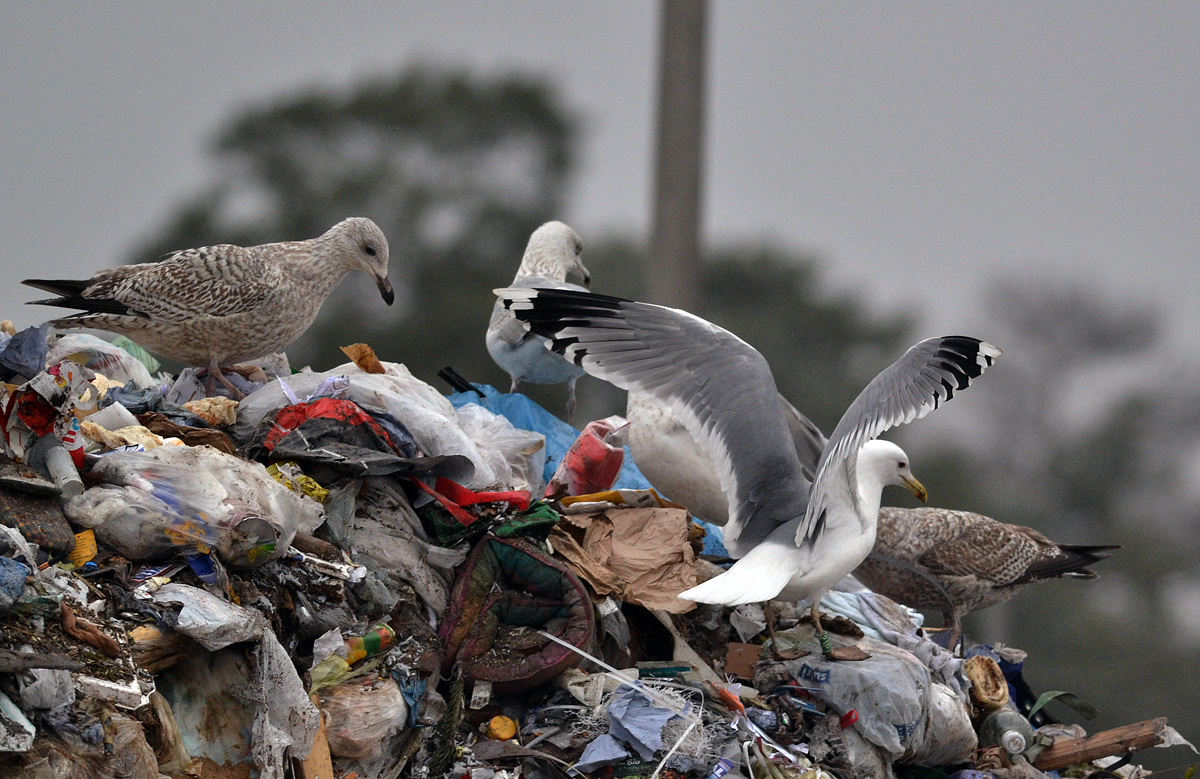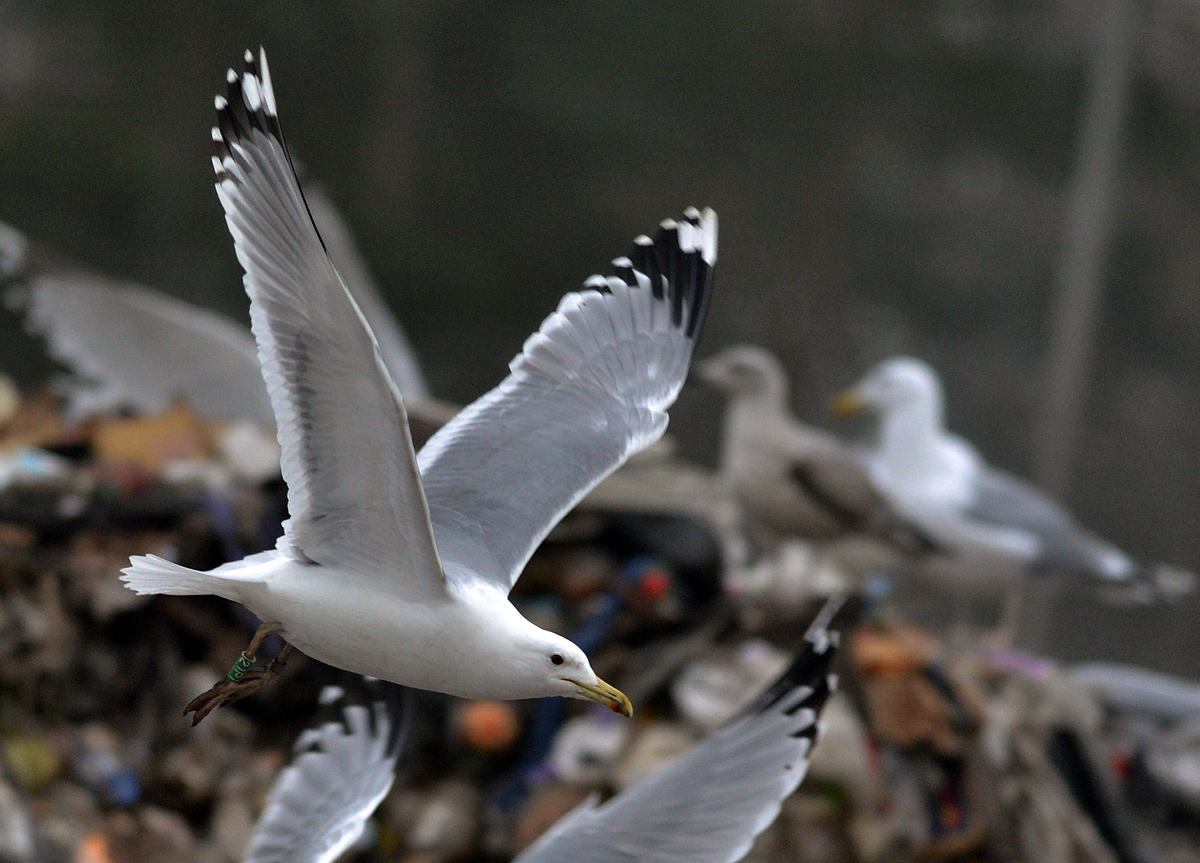 Larus cachinnans
Larus cachinnans
(last update:
Greg Neubauer
Marcin Przymencki
Albert de Jong
Mars Muusse
cachinnans plumages
Larus cachinnans 21P1 8CY-9CY, February 2013 & April 2014, Minden, Germany & Zastow Karczmiski, Poland. Picture: Łukasz Bednarz & Armin Deutsch.
Green 21P1 and metal PLG DN-19496, ringed as pullus cachinnans on May 08 2006 at Wloclawek, central Poland (52°39' N, 19°08' E).
Recoveries:
| 21P1 | 8-5-2006 | RZ. Wisla, Wloclawek | 52°39' N | 19°08' E |
| 21P1 | 13-2-2013 | Deponie Pohlsche Heide | 52°23' N | 08°46' E |
below: Larus cachinnans 21P1 9CY, April 17 2014, Zastow Karczmiski, Poland. Picture: Łukasz Bednarz.
Please visit Łukasz's BLOG for beautiful drawings and up-to-date gull news from eastern Poland: Wildlife art and illustration
Larus cachinnans 9cy, probably female. Here in the breeding colony near Zastow Karczmiski (Vistula River).

below: Larus cachinnans 21P1 8CY, February 13 2013, Deponie Pohlsche Heide - Minden, Germany (52°23'05N, 08°46'45E). Picture: Armin Deutsch.
Probably female, with much black on outerwebs of P8-P10.





Below, table 1 is repeated to score this bird in adult plumage. Traits scores are in italic + bold. Total score is 2 (by Mars Muusse), open for discussion, but will always be far away from hybrid zone.
| Trait | Score | Description |
| P10 overall pattern: white to black ratio | 0 | less black than white |
| 1 | approximately equal black and white | |
| 2 | more black than white | |
| P10: white tip | 0 | clear white, no signs of black |
| 1 | small dark spots on one or both webs | |
| 2 | incomplete subterminal bar (two large black spots, one on each web or an unconnected bar, broken in the middle) | |
| 3 | complete subterminal bar | |
| P10: tongue | 0 | white or whitish |
| 1 | paler than mantle | |
| 2 | same shade as mantle | |
| P5: extent of black | 0 | black on both webs connected, forming band, black of equal depth on each web |
| 1 | black on both webs connected, forming band, black on outer web deeper than inner | |
| 2 | black on both webs, but isolated spots (= incomplete bar) | |
| 3 | black on outer web only | |
| 4 | no black | |
| P4: extent of black | 0 | black on both webs |
| 1 | black on one web only | |
| 2 | no black | |
| Iris peppering | 0 | dark-looking, >50% covered by dark spotting/peppering |
| 1 | moderately dark, with 10-50% of the area spotted | |
| 2 | single or very few dark spots (area < 10%) | |
| 3 | no dark spotting on iris | |
| Eye-ring colour | 0 | dark/deep orange to red |
| 1 | pale to moderately orange | |
| 2 | yellow | |
| Bill shape | 0 | very long and slim, with little/no visible gonydeal angle (L:D ratio >2.8) measured 2,82 Mars Muusse from picture |
| 1 | slim, slight gonydeal angle (ratio 2.4-2.79) | |
| 2 | intermediate (ratio 2.0-2.39) | |
| 3 | short and deep, well-marked gonydeal angle (ratio <2.0) | |
| Leg length | 0 | long |
| 1 | moderately long | |
| 2 | short |
Fig. 6. Sum trait scores for adult Caspian Larus cachinnans and Herring Gulls L argentatus, and hybrids. Scores are calculated by summing individual trait score values. The figure shows the percentage of individuals in the sample with a given sum value. Numbers in parentheses are the minimum and maximum values recorded.
From the Rarities Committee's files - Identification of
Caspian Gull.
Part 2: phenotypic variability and the field characteristics of hybrids, by Chris Gibbins, Grzegorz Neubauer and Brian Small, IN: BB 104/2011.
